A digital tool for the visualization and documentation of phantom limb sensations and phantom limb pain.
From our point of view, there is currently no satisfactory established system for the visualization and documentation of phantom sensations and complaints for patients with extremity amputations. With the software C.A.L.A (Computer Assisted Limb Assessment) we want to close this existing gap for therapists and medical doctors. C.A.L.A. enables the therapist to visualize, quantify and evaluate the sensations and pain together with the patient over the course of the treatment.
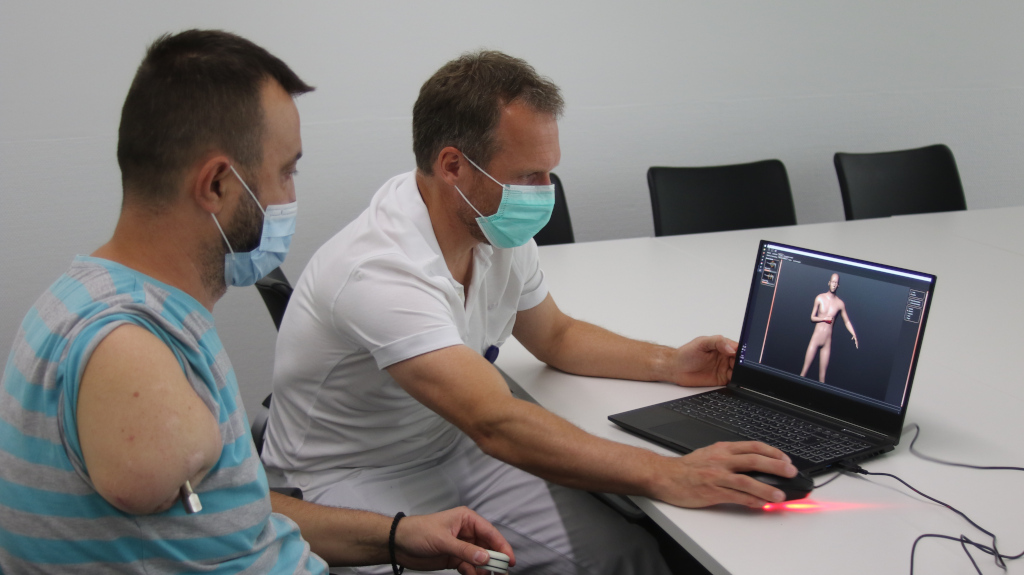
After an amputation, the amputated limb often is accompanied by phantom sensation and/or phantom or stump pain. Therapists usually document the patient’s pain on body charts (paper) or with questionnaires. These survey methods are insufficient for patients, since the location, appearance and pain of the phantom cannot be represented adequately. For therapists, physicians and orthopedic technicians, on the other hand, it is difficult to quantify patient statements and document progress. Furthermore, these methods do not even allow for a crude visualization of the patient’s body image, relying essentially only on a written description or crude handwritten graphic representation.
With C.A.L.A. we have developed a software tool that allows for the appearance and position of the phantom as well as pain areas to be precisely documented and visualized on a human 3D avatar. The avatar is modeled after the patient’s body image, and the appearance of the phantom limb itself can be modified, as well as its somatic abnormalities, such as p. e. telescoping can be visualized. The perceived pain (both phantom and residual limb pain) and the patient’s altered phantom sensation can directly and adequately be mapped on the rotatable 3D model.
How C.A.L.A. works
The basic idea of C.A.L.A. is the quick adjustment of a 3D avatar to accurately recreate the body image as perceived by the patient. The main focus is placed on easy and fast operability. C.A.L.A. currently provides the following functionality:
‣ Setting up the Base Model
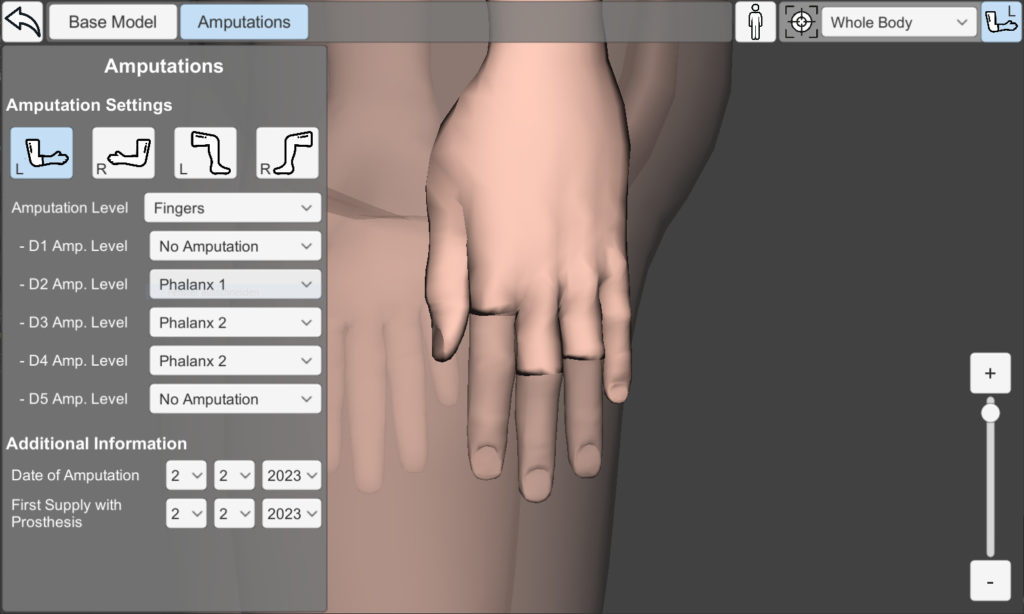
A base model is initially set up for each patient. The amputation level for one or multiple amputations can be set, ranging from forequarter amputation respectively hemipelvectomy to the amputation of the toes or phalanxes of the fingers. This is visually represented by the avatar and helps to distinguish between stump pain and phantom limb pain. Based on this, sessions can be created in which the phantom limb sensation is captured.
‣ Setting up Positions and Deformations
The sensation of the phantom limb being fixed in one or more twisted or unnatural positions can be represented by using sliders to rotate each joint of the phantom limb around its anatomic and non-anatomic axes. Using the same principle, the circumference and length of the individual segments of the phantom can be changed, e.g. to reproduce the telescoping effect.
‣ Drawing Pain and other Phantom Sensations
Sensations are drawn directly on the 3D avatar by using the mouse pointer or finger as a brush. The intensity of the sensation, indicated on a 0-10 NRS scale, is visualized by a yellow-red color gradient. A sensation can be associated with several pain qualties taken from the Short Form McGill Pain Questionnaire 2.
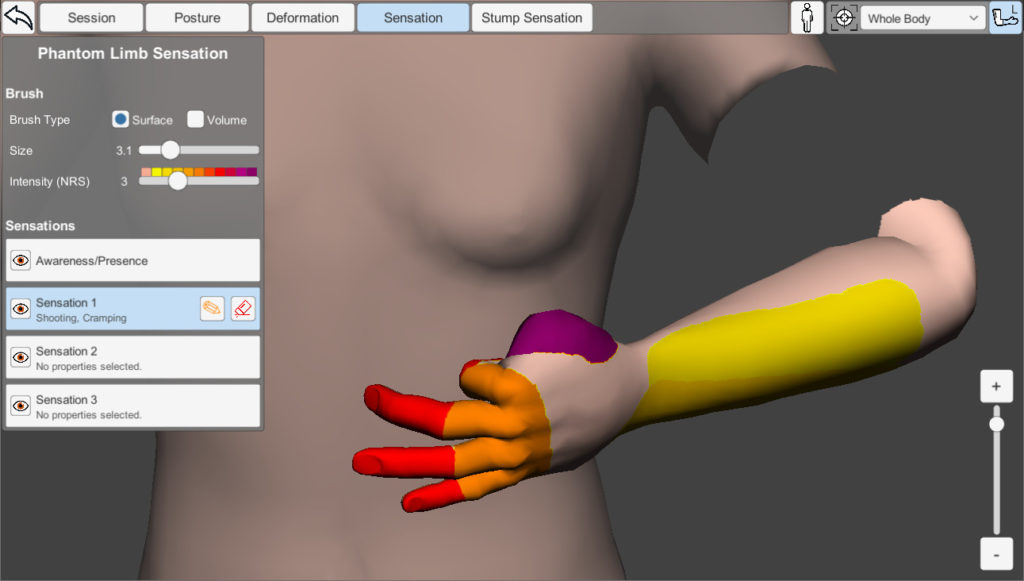
We also added further attributes to discribe the location of the pain and temporal aspects (e.g. ‘superficial pain’, ‘deep pain’, ‘in the morning’, ‘in the evening’. Sensations can be drawn on the phantom limb as well as on the stump. The perceived presence of the phantom limb, which decreases more rapidly in the proximal regions, is drawn on a separate layer and visualized using transparency. This allows to make parts of the phantom invisible, as they are not perceived by the patient.
‣ Quantifying the Body Image
All data that were entered during the documentation process can be quantified and allows for the monitoring of the phantom’s condition over the course of treatment.
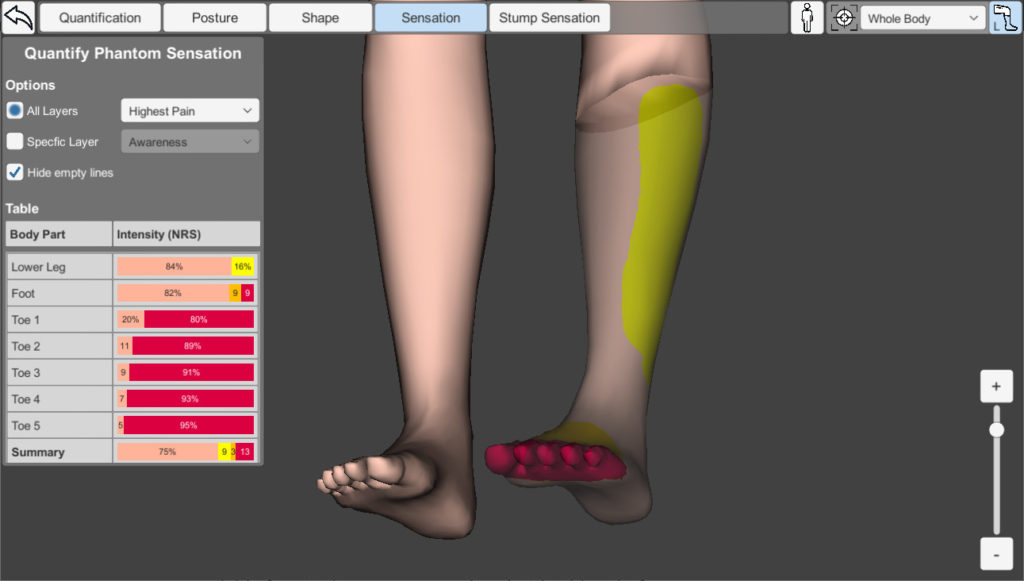
For the quantification, the angles of the phantom’s joints are determind. The size and length changes of the indivudal segments of the phantom are calculated as a percentage as well as the surfaces of the various sensation intensities that have been drawn in. The presence of the phantom limb is calculated separately.
Development of C.A.L.A.
We developed a first prototype of C.A.L.A. by modifying and extending the open source software tools MakeHuman and Blender. This first prototype was evaluated in terms of usability and functionality with 33 physio- and occupational therapists and the coverage of it’s functional scope was tested with 22 amputees. Based on the gathered feedback we started the development of a standalone version of C.A.L.A. with Unity. A first fully functional version of C.A.L.A. was completed in summer 2022 and is available for Windows, macOS and Android Tablet platforms.
C.A.L.A. is published under the CC BY-ND license and is free for research use. If you are interested in using C.A.L.A., please contact us at cala (@) playbionic.org.
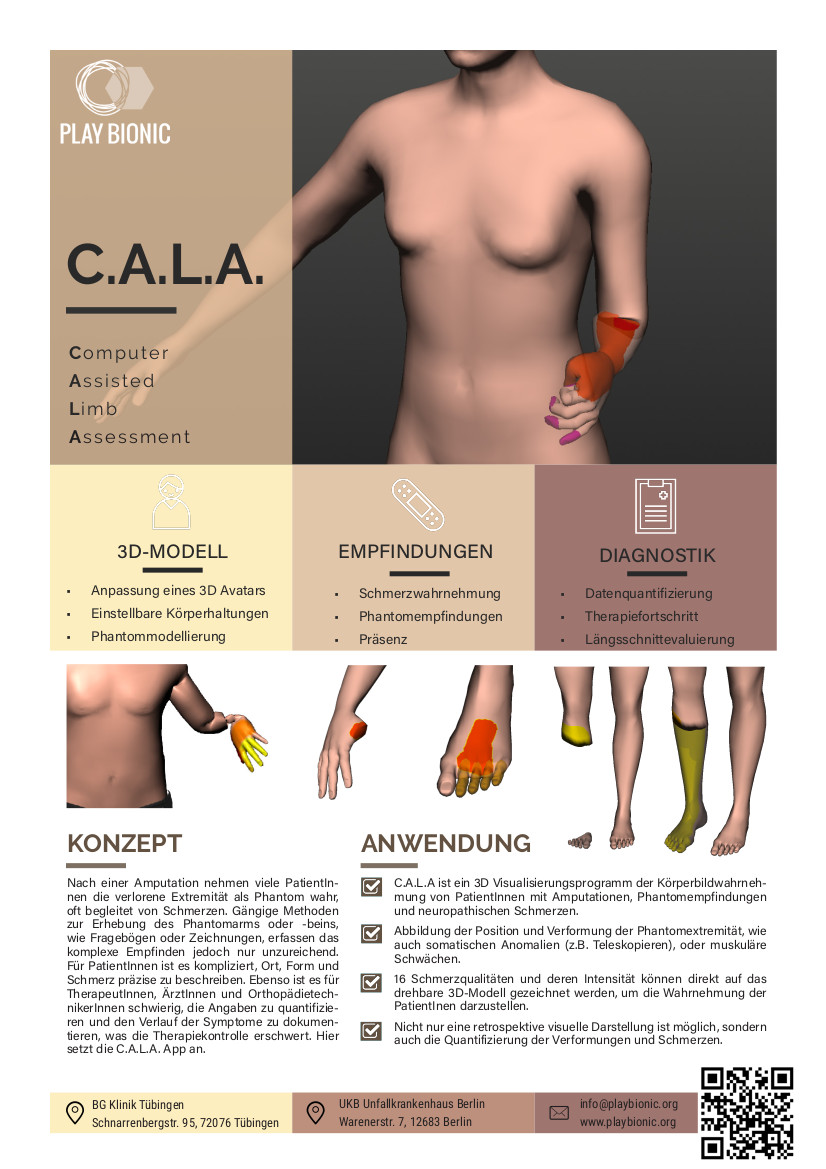
Video
Publications
- Visualizing the Unseen: Illustrating and Documenting Phantom Limb Sensations and Phantom Limb Pain With C.A.L.A.
- 3D Body Image Perception and Pain Visualization Tool for Upper Limb Amputees
Contributors
Project lead: Cosima Prahm
Software developer: Michael Bressler
Clinical consultants: Jonas Kolbenschlag, Heide Schwieder, Joachim Merk, Tanja Gohlke
